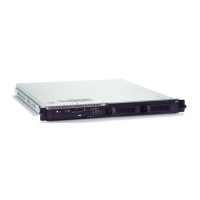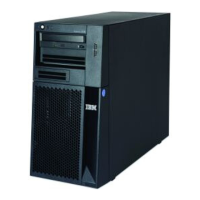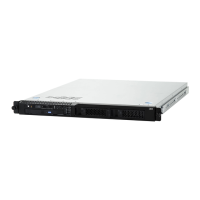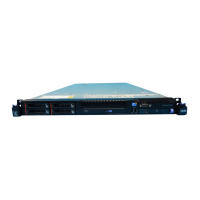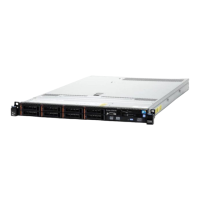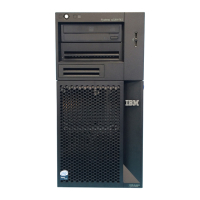AS/400 System Architecture: Underlying Strength of the AS/400e 19
AS/400 System Architecture: Underlying Strength of the AS/400e
performance enhancement. This design provides the AS/400e system with its outstanding
performance in the commercial, transaction-based environment.
The AS/400e system is designed for business computing. One of the main characteristics of
that environment is that it is I/O-intensive, rather than compute-intensive. In addition to
outstanding performance in the business environment, this design gives the AS/400e system
an elegant method of integrating diverse environments into a single, harmonious customer
solution. The microprocessors that look after a particular I/O device are accommodated on
I/O cards that fit into slots on the AS/400e buses. One of these cards may be the Integrated
Netfinity Server. This is a PC on a card, which enables the AS/400e system to run a Windows
NT server, for example.
Single-Level Storage
Application programs on an AS/400e are unaware of the underlying hardware characteristics,
because of the TIMI (see “Technology-Independent Machine Interface” on page 14). They are
also unaware of the characteristics of any storage devices on the AS/400e because of
single-level storage.
As with TIMI, the concept of single-level storage means that the knowledge of the underlying
characteristics of hardware devices (in this case, main storage and disk storage) reside in the
SLIC. As a result, all of the storage is automatically managed by the system. Programs work
with objects (see “Object-Based” on page 23). Objects are accessed by name, not by
address. No user intervention is ever needed to take full advantage of any storage
technologies.
The AS/400e system address size is vast. AS/400e systems can address the number of bytes
that 64 bits allows it to address. The value 2
64
is equal to 18,446,744,073,709,551,616.
Therefore, the AS/400 system can address 18,446,744,073,709,551,616 bytes, or 18.4
quintillion bytes. To put this into more meaningful terms, it is twice the number of millimeters
in a light-year. Light travels approximately 6,000,000,000,000 miles in one year.
Single-level storage also enables another extremely important AS/400e benefit,
object
persistence
. Object persistence means that the object continues to exist in single-level
storage (unless purposely deleted by the customer). Memory access is extremely fast. A
customary machine requires that information be stored in a separate file system if the
information is to be shared or retained for a long time.
Persistence of objects is extremely important for future support of object-oriented databases.
Objects need to continue to exist even after their creator goes away. The AS/400e system is
uniquely positioned to exploit this characteristic of object persistence, where customary
systems use a less-elegant mechanism that requires them to store their persistent objects in
a separate file system, with all the attendant performance implications.

